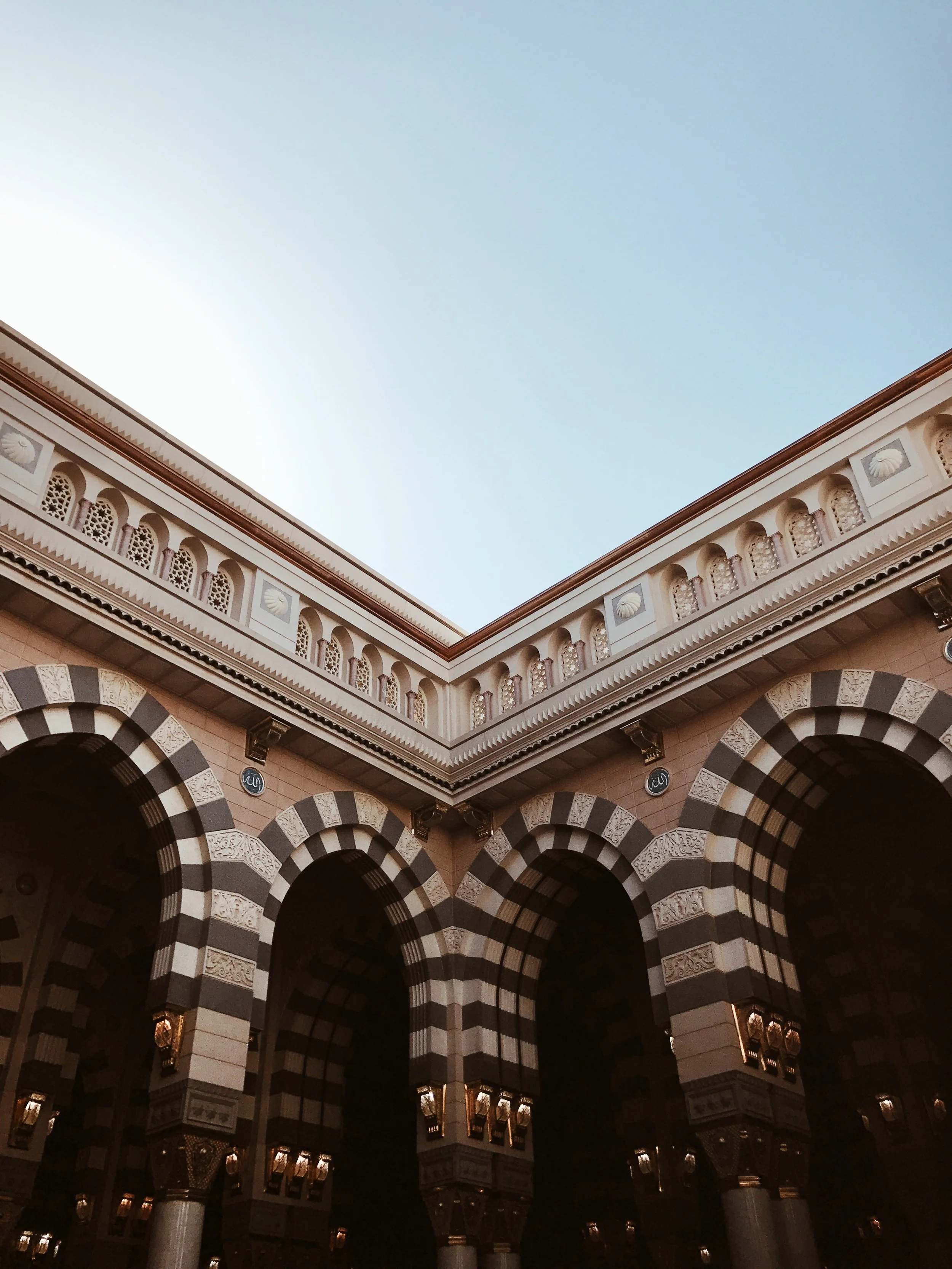
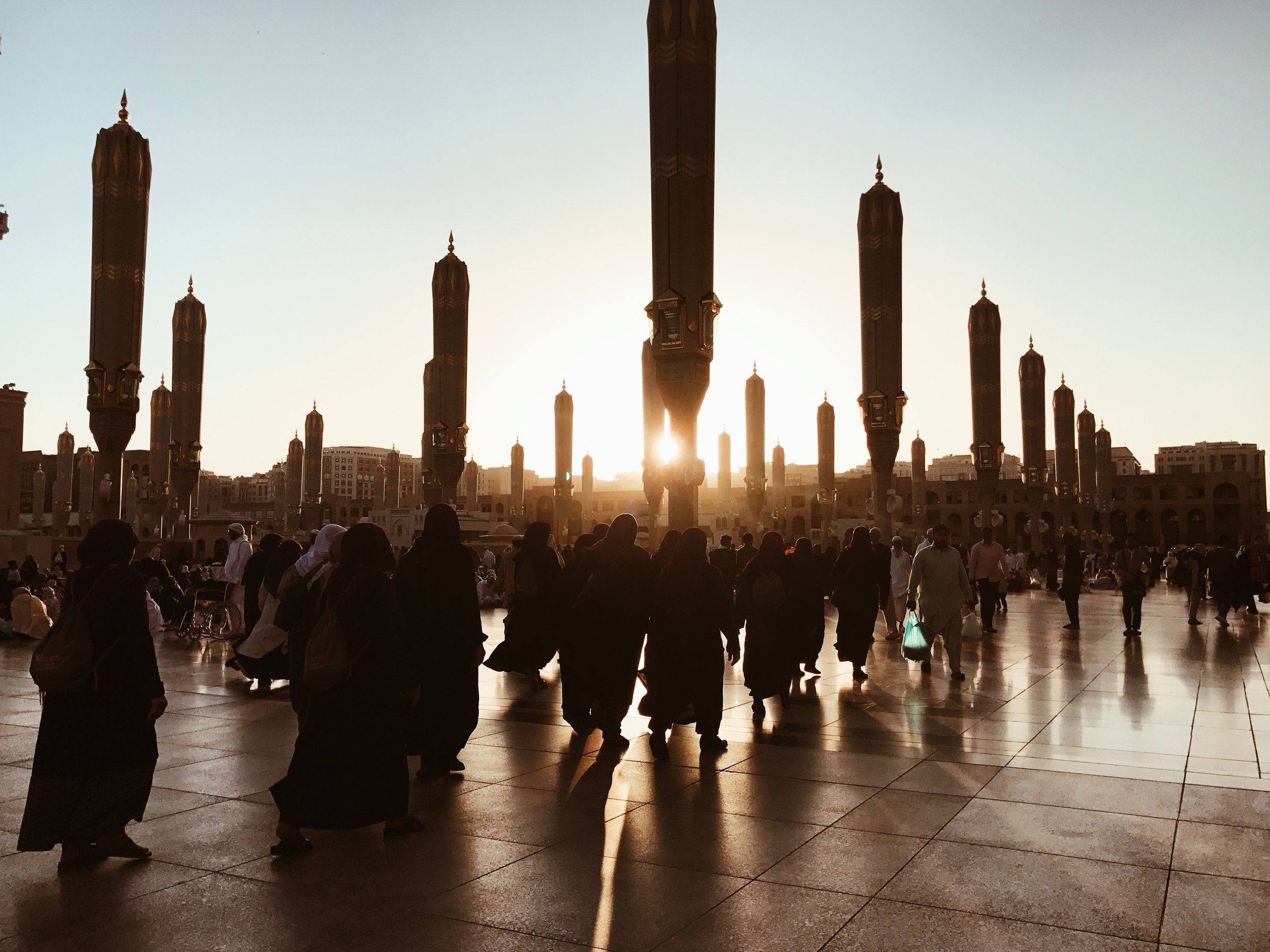










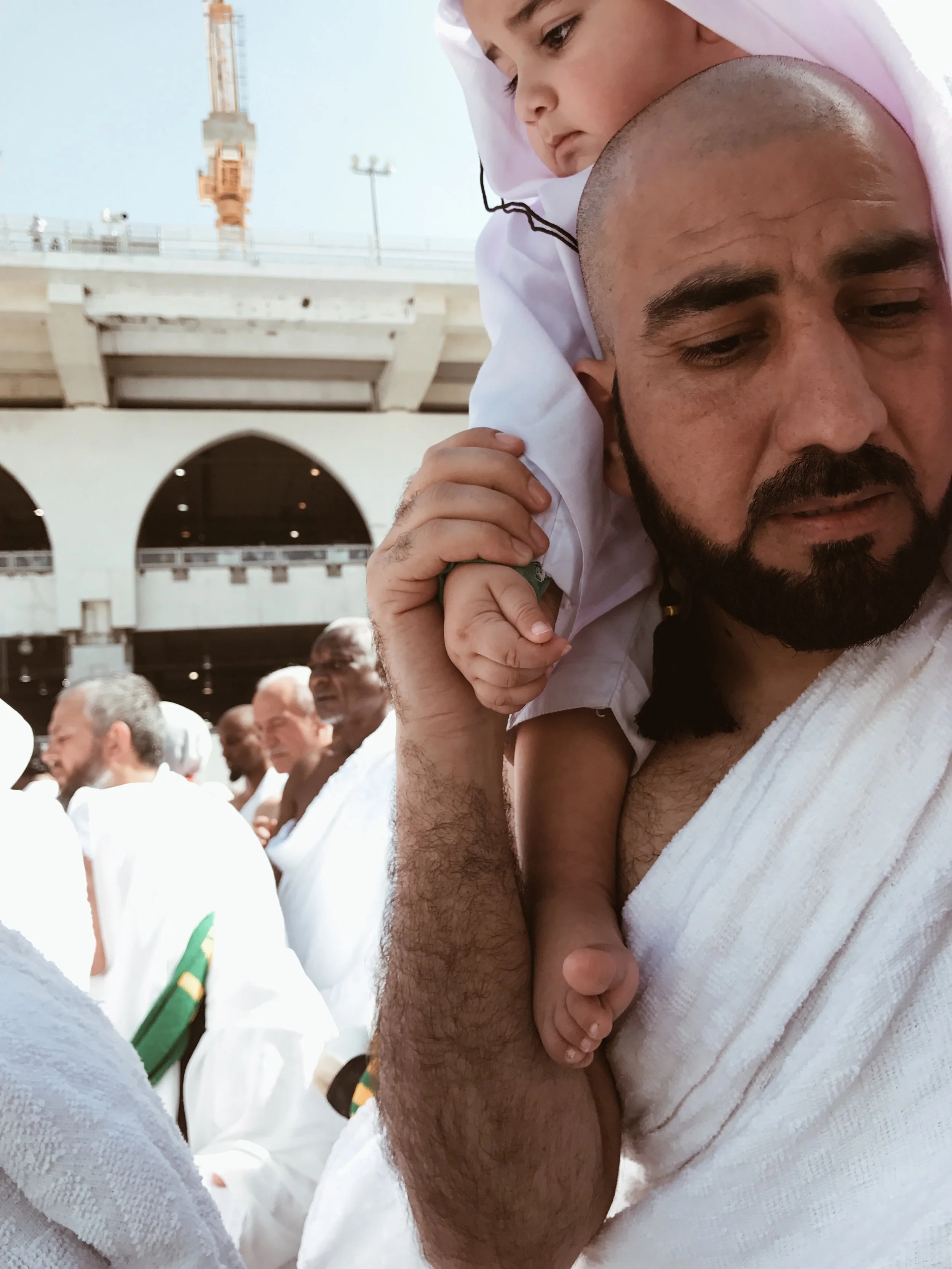
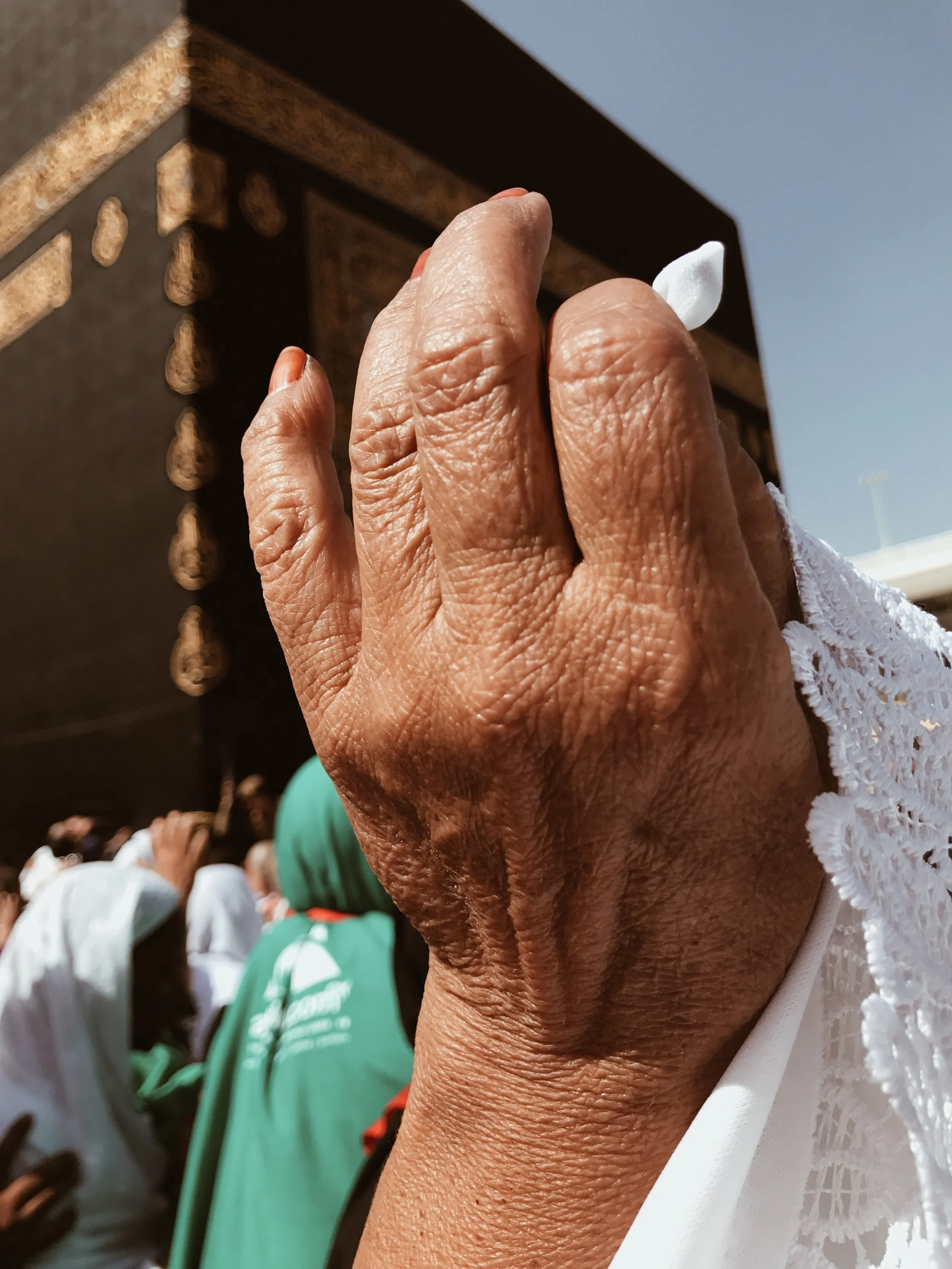



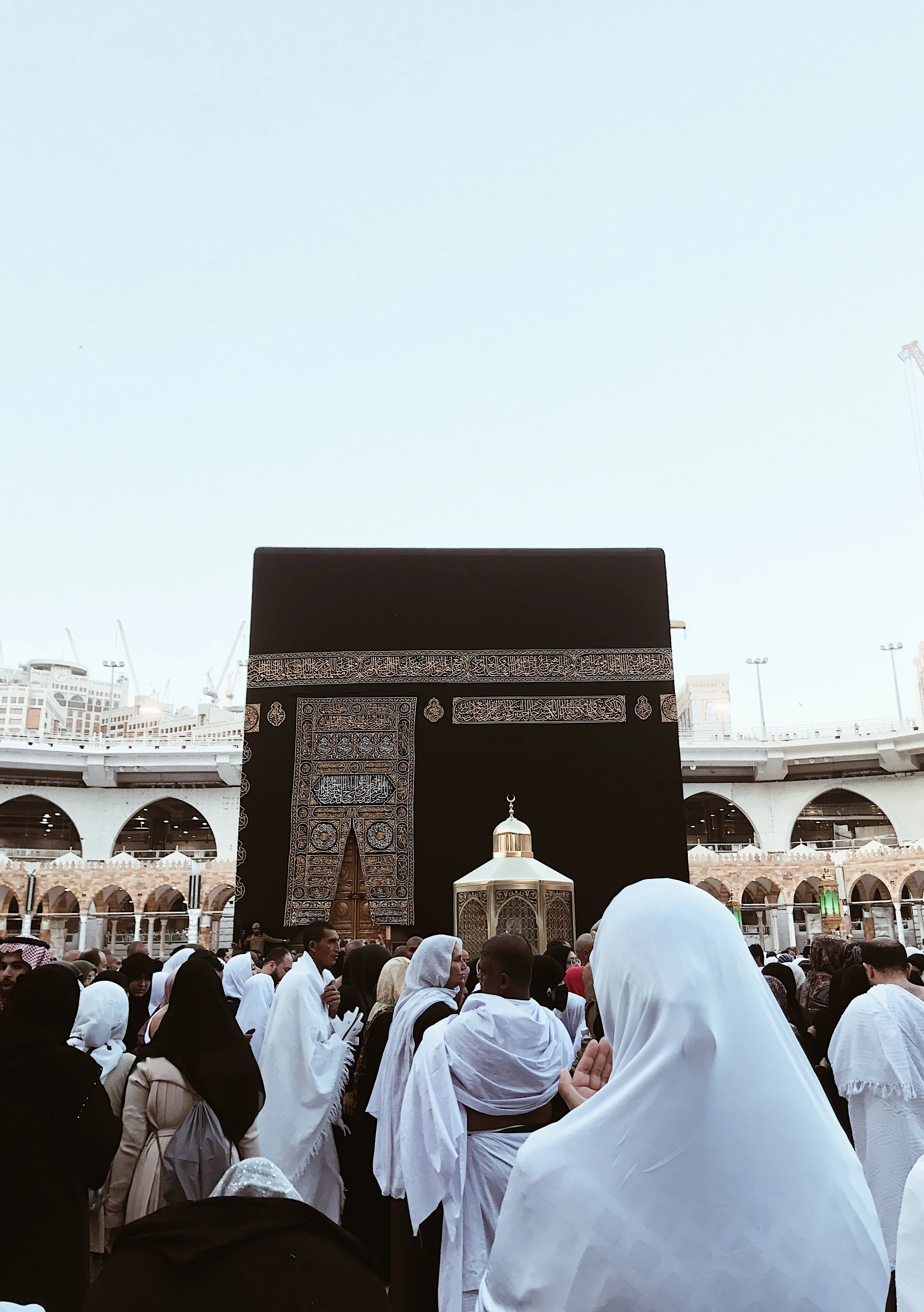




The ʿUmrah is an Islamic pilgrimage to Mecca, the holiest city for Muslims, that can be undertaken at any time of the year, in contrast to the Ḥajj, which has specific dates according to the Islamic lunar calendar.
Many pilgrims choose to begin their pilgrimage with a visit to Islam’s second holiest site, the Prophet Muhammad’s mosque in Medina.
(These photos were all shot on iPhone as cameras are usually not allowed within the mosques)

Women rush to secure a spot to pray inside the mosque.
Because there is ample prayer space outside, Masjid Nabawi can accommodate 600,000 people and up to 1 million during the Hajj period. Many, however, prefer to worship inside, safe from the heat/cold.

Inside Masjid Nabawi, there is a sacred chamber (Rawdah) in which the tombs of Prophet Muhammad and two of his companions, the first caliphs of Islam, Abu Bakr and Umar, are housed.
There is also an empty grave that belongs to Jesus (Issa) and according to Islamic tradition, is believed that he will return and eventually be buried there.

Reflection during the dawn prayer.
If you can’t find a spot to pray inside the mosque, there is ample space outside.

Pilgrims visit the martyrs of Uhud.
The cemetery contains the bodies of 70 Muslims who died in the second battle of Islam, most notably the Prophet Muhammad’s uncle, Hamza.
Signs around the cemetery remind visitors to be respectful of the dead and warn against "innovations" such as supplicating to the dead.

Water break.
Zamzam water holds special significance in Islam and is supplied daily by tankers from Makkah to Masjid Nabawi in Medina. The water comes from a well which marks the site of a spring that, according to Islamic tradition, miraculously, had issued forth from a barren wadi (non perennial stream) where the Prophet Abraham, under God’s command, had left his wife Hajar and their infant son Ismail.
In her desperate search for water, Hajar ran seven times back and forth in the scorching heat between the two hills of Safa and Marwa to look for water for Ismail (pbuh), who was dying of thirst. It is said that God sent the Angel Gabriel, who scraped the ground, causing the spring to appear. On finding the spring, and fearing that it might run out of water, Hajar enclosed it in sand and stones.
The name Zamzam originates from the phrase Zomë Zomë, meaning ‘stop flowing’, a command repeated by Hajar during her attempt to contain the spring water.
The area around the spring, which was later converted to a well, became a resting place for caravans, and eventually grew into the trading city of Makkah.

Ihram (pilgrimage garment) on and finally driving the 4 hours from Medina to Makkah.
Miqat (meaning “a stated place”) is the location at which pilgrims wear Ihram (the garment which is white for men), either for Hajj or Umrah. There are five points which pilgrims are not allowed to cross before they wear Ihram if they are going to enter the Haram (sanctuary or holy site) boundary to perform Hajj or Umrah.
When coming from Medina, the miqat is located 450 kilometers from Mecca at Dhu 'l-Hulayfa (Abyar Ali). If you're traveling by air, the flight crew usually notifies pilgrims when they're about to cross the miqat so they can prepare themselves.

Once in Makkah, it is difficult to ignore the most expensive building in the world looming above the fast developing city.

The Kaaba is a 43ft tall cube structure and the most sacred Islamic site. It is the direction, from any point on Earth, to which Muslims turn their faces when they pray.

A pilgrim touches the Kaaba.
The Kaaba is draped in a silk cloth called a Kiswah. From afar, it looks like a plain black cloth but when the light hits it just right or when you move closer, you can appreciate the amount of work that goes into manufacturing this piece of art. The silk is dyed black and woven. Quranic verses are hand embroidered with silver threads covered with gold. It is a painstaking process that takes a year, 670kgs of silk, 150kgs of gold, and almost $5million to complete.
Every year the Kiswah is replaced during the Hajj pilgrimage. It is then cut into small pieces and distributed to various individuals, visiting Muslim dignitaries etc.

Pensive
A man watches pilgrims circling the Kaaba below while doing Dhikr (meaning remembrance). These are short phrases or prayers which are repeatedly recited silently or aloud. It is counted on a set of prayer beads called misbaha, which is like the Catholic rosary.

'Bismillah wa Allahu Akbar' (In the name of Allah and Allah is most Great)
One begins tawaaf at the Black Stone and walks counterclockwise seven times, raising your hand and reciting the above phrase each time you return to this corner.

Overcome with emotion, one woman cried out:
"اللّهُـمَّ إِنِّـي أَسْأَلُـكَ الجَـنَّةَ وأََعوذُ بِـكَ مِـنَ الـنّار"
Oh Allah, I ask You to grant me Paradise and I take refuge in You from the Fire.

A pilgrim takes the time to send a message home. Technology is conspicuous even while on pilgrimage. You can often see people documenting and even live streaming their experiences to share with friends and family who could not make the journey (much like I am doing now!).